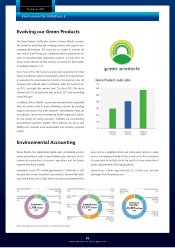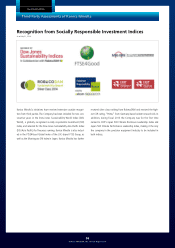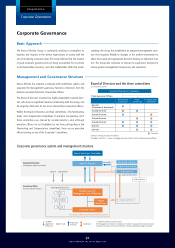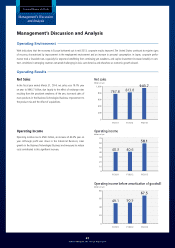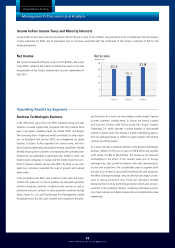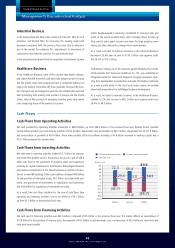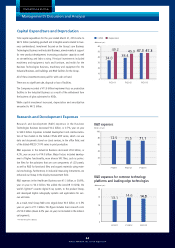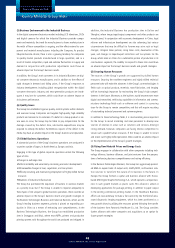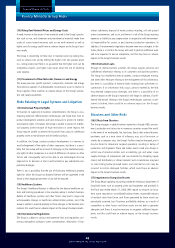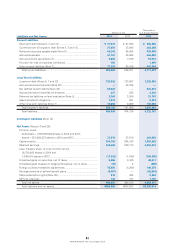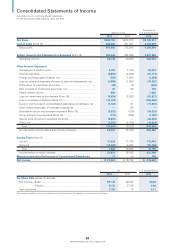Konica Minolta 2014 Annual Report Download - page 43
Download and view the complete annual report
Please find page 43 of the 2014 Konica Minolta annual report below. You can navigate through the pages in the report by either clicking on the pages listed below, or by using the keyword search tool below to find specific information within the annual report.
42
KONICA MINOLTA, INC. Annual Report 2014
Financial Review and Data
Management’s Discussion and Analysis
Net Income
Net income increased 44.5% year on year to ¥21.8 billion, due in part
to tax effects related to the revision of deferred tax assets in line with
reorganization of the Group’s administrative structure implemented in
April 2013.
Income before Income Taxes and Minority Interests
Income before income taxes and minority interests fell 30.5% year on year to ¥23.5 billion, due primarily to a loss on withdrawal from the business
of glass substrates for HDDs and an impairment loss on structures associated with the termination of the Group’s production of film for the
Healthcare Business.
Net income
FY2013FY2012FY2011
(Billions of yen)
21.8
15.1
20.4
0
5
10
15
20
25
Operating Results by Segment
Business Technologies Business
In the office field, sales of A3 color MFPs remained strong and sales
volumes increased significantly compared with the previous fiscal
year in all regions, including Japan, the United States and Europe.
The increasing share of high-end models contributed to sales expan-
sion. In Optimized Print Services (OPS), we strengthened our global
business structure, further expanded the service menu, and rein-
forced business-generating and proposal-making capabilities, thereby
steadily securing more customers and expanding the operating base.
Furthermore, we established a hybrid-type sales model for small- and
medium-sized companies in Europe and the United States that com-
bines IT business solution services with MFPs. By doing so, we culti-
vated new customers, expanded the scale of projects and realized
added value.
In the production print field, sales volumes of color units and mono-
chrome units grew year on year. In addition, we expanded operations
related to high-mix, small-lot on-demand print services as well as
production and print services for sales promotion materials through
Kinko’s Japan Co., Ltd. and Charterhouse Print Management Limited
(headquartered in the UK), both of which were acquired in the previ-
ous fiscal year. As a result, we are providing a wider range of options
to meet customers’ printing needs. In Europe, we formed a capital
and business alliance with France-based MGI Digital Graphic
Technology S.A., which operates a unique business in such growth
markets as plastic cards. This alliance is aimed at developing applica-
tions for package printing, in addition to paper output in the existing
commercial printing market.
As a result, net sales to external customers in the Business Technologies
Business climbed 25.5% year on year to ¥729.8 billion and segment
profit soared 101.8% to ¥63.8 billion. The increase in net sales was
attributable to the effect of the steadily weak yen on foreign
exchange rates, sales growth of mainstay color units, improved prod-
uct mix and acquisitions. The considerable jump in segment profit
was due to an increase in gross profit resulting from sales expansion,
the effect of foreign exchange rates, and the full year impact of mea-
sures to reduce production costs. These cost reductions included
decreasing fixed costs by promoting production reform and unit pro-
curement in the production division, conducting centralized purchas-
ing of raw materials and digital components, and implementing value
engineering.





